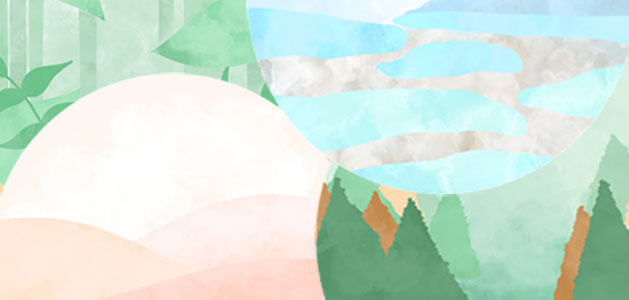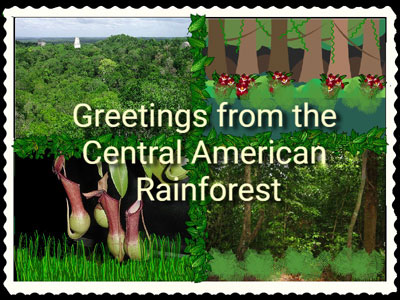
In this lesson, students learn about the five biomes as they create a promotional travel brochure that provides information and an itinerary for a visit.

More and more people are deciding to spend their vacation time travelling to far away places. As a result, a local travel agency wants to offer biome vacation packages. The owner has asked for your help to create brochures that entice its customers to take a tour of a biome.
Complete a Biomes KWHL chart as a class to get students thinking about biomes that exist around the world, activate prior knowledge, and assess what students already know about biomes.
Using your text book, online resources, and videos to introduce students to the different biomes found on Earth.
Once students have a foundational understanding about all of the biomes, group students into teams of 3-4. Assign each team the task of creating a travel brochure for a tour through a specific biome.
Have student teams research the following questions about their biome:
When each group has collected a solid amount of information, ask them to complete a Venn Diagram comparing life in that time and place to life now. This will help you identify misconceptions and will help them identify unique features of their biome to include in their brochures.
You can have student teams use other graphic organizers before they begin writing to:
Create a Graphic Organizer
Need a thought web, timeline, flowchart, or other graphic organizer for a lesson?
CreateGive students time to complete additional research as they begin to organize their information.
Have students use create an itinerary, brochure, or even a advertisement for a tour of their biome. For example, a biome advertisement could include:
Have students use a publishing tool to combine their text and images and print their travel brochures.
If you have access to a digital tool like Wixie, you can print the brochures or share student work digitally in PDF form or online through a URL. This allows them to create vivid travel “infomercials” with culturally appropriate sounds and voice narration!
Print the brochures and display them to celebrate student effort and take a jigsaw approach to learning so that each group is responsible for helping other students learn more about the specific biome in their project. You may also want to share these in your school library or media center so other students in the school can explore them to learn about history.

Have each team present the information in their brochure orally to the rest of the class, helping them combine informational and argument writing and speaking. You may want to ask a representative or two travel agencies to review the brochures and oral presentations and provide feedback.
You may also want to host an evening event, in the form of a tourism trade show, where families and community members can learn more about visiting different biomes.
The students will conduct research of their biome of choice.
The students will synthesize their knowledge based upon their research to create their digital travel brochure. This project must include various facts about the particular biome, including a persuasive argument as to why tourists should visit their biome.
Whitfield, Philip and Moore, Peter, Cox, Barry. (2003) Biomes and Habitats. Macmillan. ISBN: 0028656334.
Johnson, Rebecca and Saroff Phyllis. (2001) A Walk in the Tundra (Biomes of North America). Carolrhoda Books. ISBN: 1575055260.
Kalman, Bobbie. (1998) What is a Biome? Crabtree Publishing. ISBN: 086505875X.
Lindeen, Carol and Smith-Saunder Gail. (2003) Life in a Desert (Pebble Plus: Living in a Biome). Capstone Press. ISBN: 0736833994.
Grade 3: LS4-3 Biological Evolution: Unity and Diversity
Construct an argument with evidence that in a particular habitat some organisms can survive well, some survive less well, and some cannot survive at all.
Grade 6-8: LS2-3 Ecosystems: Interactions, Energy, and Dynamics
Develop a model to describe the cycling of matter and flow of energy among living and nonliving parts of an ecosystem.
Writing
Research to Build and Present Knowledge
7. Conduct short as well as more sustained research projects based on focused questions, demonstrating understanding of the subject under investigation.
Speaking and Listening
Comprehension and Collaboration
2. Integrate and evaluate information presented in diverse media and formats, including visually, quantitatively, and orally.
Presentation of Knowledge and Ideas
4. Present information, findings, and supporting evidence such that listeners can follow the line of reasoning and the organization, development, and style are appropriate to task, purpose, and audience.
3. Knowledge Constructor
Students critically curate a variety of resources using digital tools to construct knowledge, produce creative artifacts and make meaningful learning experiences for themselves and others. Students:
a. plan and employ effective research strategies to locate information and other resources for their intellectual or creative pursuits.
b. evaluate the accuracy, perspective, credibility and relevance of information, media, data or other resources.
c. curate information from digital resources using a variety of tools and methods to create collections of artifacts that demonstrate meaningful connections or conclusions.
6. Creative Communicator
Students communicate clearly and express themselves creatively for a variety of purposes using the platforms, tools, styles, formats and digital media appropriate to their goals. Students:
a. choose the appropriate platforms and tools for meeting the desired objectives of their creation or communication.
b. create original works or responsibly repurpose or remix digital resources into new creations.
c. contribute constructively to project teams, assuming various roles and responsibilities to work effectively toward a common goal.
d. publish or present content that customizes the message and medium for their intended audiences.

Follow us on Instagram for daily inspiration

Create a thought web, cluster, flowchart, or other graphic organizer for a lesson
8 first projects to get students using technology
Creative, digital book reviews
Fun and powerful ideas with animated characters

Wixie
Share your ideas, imagination, and understanding through writing, art, voice, and video.

Rubric Maker
Create custom rubrics for your classroom.

Pics4Learning
A curated, copyright-friendly image library that is safe and free for education.

Wriddle
Write, record, and illustrate a sentence.

Get creative classroom ideas delivered straight to your inbox once a month.
Topics